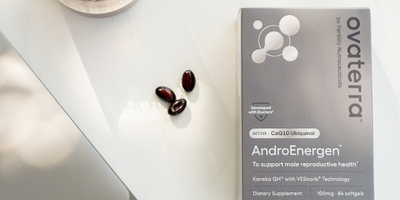BPA, or bisphenol A, is an organic chemical compound commonly used in plastic products that can – among other systemic health effects and negative impacts on multiple aspects of fetal development – impact female (and male) fertility. After nearly a decade of controversy, the scientific consensus today is that BPA is harmful to fertility and we should reduce our exposure to this chemical. Because of its wide-ranging effects on our health, 12 states and Washington DC now limit the use of BPA to varying degrees. Let’s take a look at how BPA interacts with the reproductive process and how we can reduce exposure without becoming paranoid.
What are the BPA effects on fertility?
Detrimental effects of BPA on pregnancy and female fertility was first discovered – accidentally – by the team led by Pat Hunt, who we profiled here. Since then, studies have investigated how BPA affects the reproductive system. This 2020 review in Reproductive Biology and Endocrinology summarizes the state of science well. Here are the four main pathways BPA interferes with reproductive processes:
- BPA interferes with meiosis, the process of cell division where cells containing two sets of chromosomes divide into two egg cells with one complete set of chromosomes each. When meiosis doesn’t function properly, resulting eggs end up with chromosomal abnormalities and have lower potential for fertilization, with implication on the developmental potential of the resulting embryos.
- BPA is an endocrine disruptor that mimics estrogen. BPA binds to the estrogen receptors on the cells, which disrupts the fine balance and feedback loop of reproductive hormones.
- BPA also binds to androgen receptors. This may be partially why it’s been found to affect ovarian function, especially steroidogenesis and folliculogenesis (egg development), which depends on androgens.
- Studies have also found that BPA impedes embryo implantation by lowering uterine receptivity toward embryos.
Note on male fertility
While we are focused on BPA’s effects on female fertility here, recent reviews have also implicated BPA in the decline of male fertility, linking higher levels of BPA in the urine or blood to worse findings in sperm analysis, such as sperm count, morphology and motility. So, our advice on how to reduce exposure to BPA also stands for men.
What contains BPA?
BPA is quite common, although BPA-free products have become much more easily available since the discovery of BPA’s harmful effects. In fact, BPA has been so common that over 92% of people living in the US have detectable amount of BPA in their bloodstream. Here are a few major sources of BPA:
- Clear, hard plastic called polycarbonate can contain BPA.
- BPA is also used in the lining of cans to prevent rusting.
- There are small amounts of BPA found in unexpected places, like coating of sales receipts.
How does BPA enter our bodies?
In most cases, BPA enters the body via food and drink that were stored in containers with BPA. It slowly leaches into the food and beverages from the container, and when we eat or drink them, BPA enters our bloodstream from the digestive tract. The amount of BPA released into food and beverages increase when heated. A small amount of BPA can also be absorbed from skin contact.
Should I try to avoid BPA completely?
The scientific consensus at this point is that it’s a good idea to reduce exposure to BPA. However, trying to eliminate it 100% is difficult, and likely unnecessary. The saner – and more scientific – approach is to reduce the exposure as much as possible, not to eliminate it.
More recent studies have shown that fertility problems from BPA arise when women have unusually high amounts of BPA in the blood. Studies that found negative effects of BPA on IVF outcomes like the number of eggs available for fertilization and implantation rates found a dose-dependent effect, meaning that the higher the BPA, the larger its impact on fertility – and the effects were more pronounced at unusually high BPA levels. So, think of it as “how can I reduce BPA exposure?” rather than “how can I completely eliminate BPA from my life?”
How do I reduce BPA exposure?
There are two main ways to reduce exposure to BPA. First is to avoid products and packaging containing BPA. This has gotten much easier in recent years, thanks to the increasing public awareness about BPA and consumer demand.
- Opt for fresh and frozen vegetables and fruits over canned ones.
- Replace plastic items like reusable water bottles, food storage containers and utensils with ceramic, glass or stainless steel ones.
- If you need plastic items – and there are times in our lives when plastic, lightweight and sturdy, performs best – look for products that are labeled BPA-free.
- You can also look for plastic products that don’t have “PC” or “7” recycle symbols. These symbols mean the product is made of polycarbonate. Not all polycarbonate contains BPA, but avoiding polycarbonate is an easy way to reduce your exposure to BPA from plastic products.
The other way to reduce BPA in your body is to avoid heating plastic products, because more BPA leaches out when plastic is heated.
- Use ceramic or glass dishes or bowls when reheating meals, instead of in plastic containers. Our tip: Keep a ceramic bowl at work to reheat your lunch, if you don’t want to carry a glass lunch box.
- Avoid washing plastic dishes and bottles in a dishwasher. Hand-washing them in soap and warm water is safer.
- Don’t pour boiling water into plastic containers. This is particularly important when making infant formula in a plastic bottle.
The TTC journey have more than enough sources of fear and stress without adding BPA to the list. The good news is that it’s relatively simple to significantly reduce BPA exposure to better prepare your body for pregnancy. Please reach out with questions via LiveChat - we are with you.












